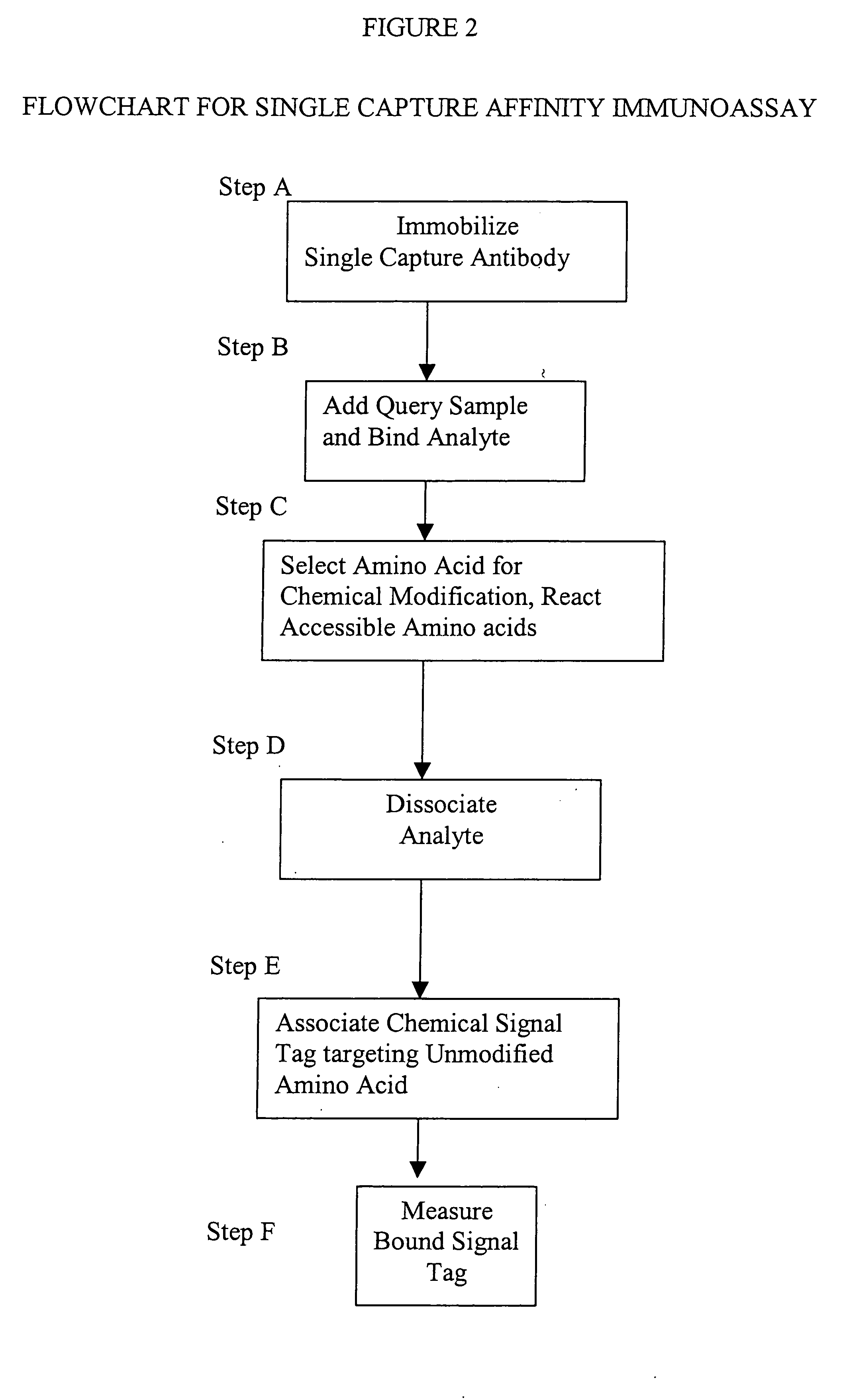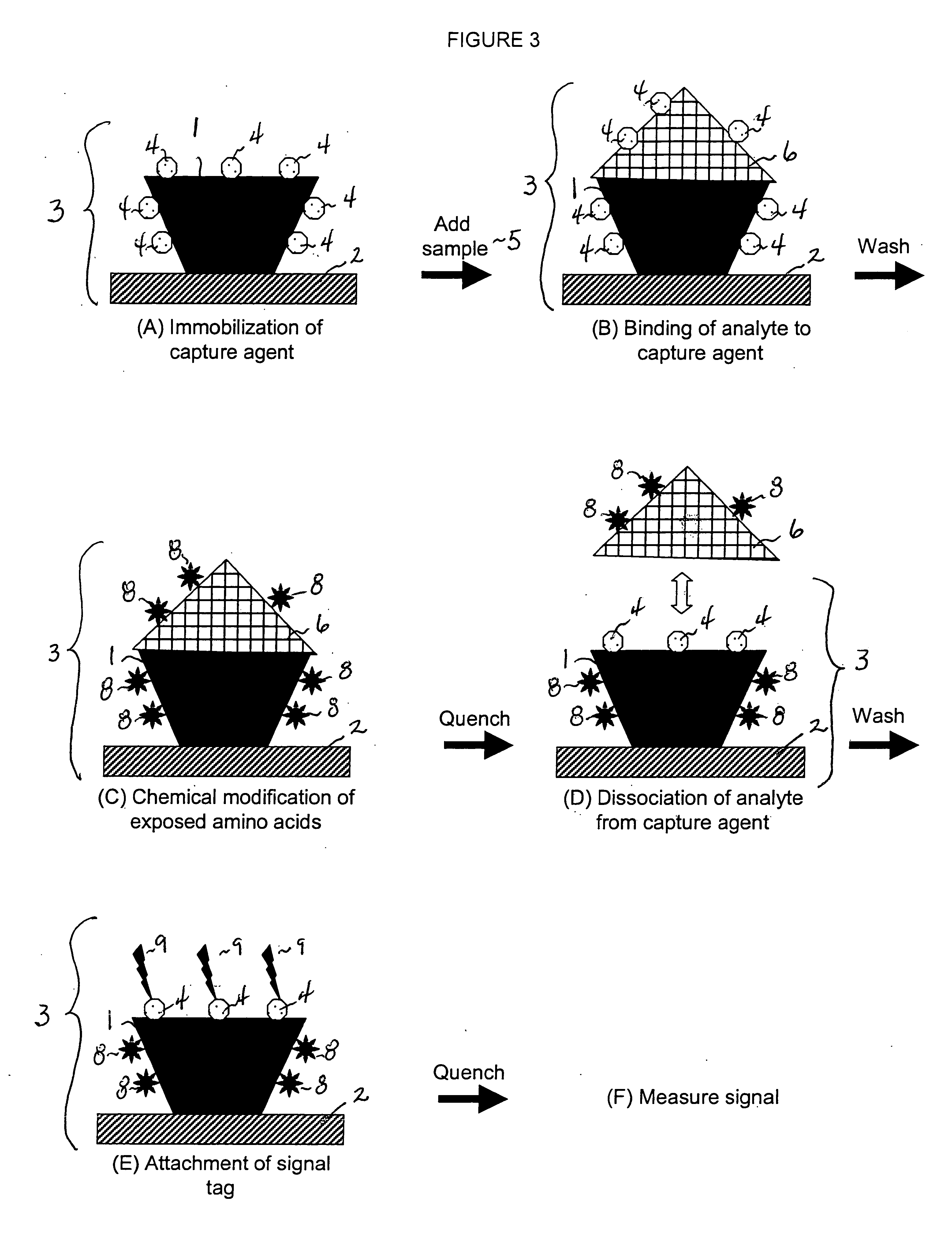[0014] This invention provides a method that permits identification and quantification of analyte using only one affinity agent, thus significantly simplifying the assay development process. This is achieved by using one affinity agent as both a capture agent to effect both specific binding to the target analyte (i.e. the
protein identification) coupled with
chemical modification steps, and to detect and quantify the binary binding between the capture agent and the analyte (i.e. the protein quantification). The requirement of a second detection agent is eliminated in this invention through the use of a selective
chemical modification process.
[0018] This invention may be applied to the detection and distinguishing of various types of post-translation modification that are known to occur for proteins. For example, assay of
phosphorylated proteins is greatly simplified by the use of only one antibody to quantify each
phosphorylation state. This capability permits inclusion of a greater number of antibody specificities in multiplexed assay format for parallel measurement of multiple
signal transduction pathways. This invention allows the mechanistic analysis of
drug leads for target validation, potential off-target activities, the emergence of compensatory
drug resistance mechanisms, and secondary or concurrent target assessment for combinatorial therapy.
[0019] This invention may be applied to comprehensive surveillance of pathogens and toxins, which is a critical component of bio-defense strategy. Over 50 biological agents including
bacteria and spores (
Gram positive and negative), viruses (
DNA and
RNA, enveloped and non-enveloped),
protozoa, and toxins have been selected by the NIH as high priority select agents in order to spur therapeutic and diagnostic product development. Many of these select agents are also blood-borne pathogens transmissible by blood transfusions or tissue transplantations, a significant concern for the safety of our blood and organ supplies. Routine surveillance of these agents requires advanced screening technologies capable of assaying multiple pathogens and bio-toxins in a
single sample. Currently, these tests are performed in uniplex assay format using immunological, serological, microbiological, or nucleic-acid based (i.e. PCR-based) methods. These tests, although suitable for single analyte measurement, are difficult to scale up for multi-analyte measurement, and even if feasible, the high cost of large scale assay production makes this approach impractical for routine screening. On the other hand, multiplexed assays using microarrays or beads can be developed for nucleic acids or proteins measurement, provided the chemical compositions of the analytes are compatible within the assay. For instance, RT PCR-based
RNA detection has been multiplexed for diagnosis of viral pathogens, e.g. HIV and HCV. However, the difficulty of combining different PCR amplification strategies for different types of nucleic acids (for instance
RNA and
DNA molecules from a mixture of RNA and
DNA viruses) makes large-scale PCR
multiplexing technical challenging. In contrast, protein-based multiplexed assays, e.g. antibody microarrays, provide more versatile assay platform in that the antibodies specific for multiple types of pathogens (
bacteria, viruses, and
protozoa), bio-toxins (anthrax,
botulism), and prions can be all multiplexed in a single assay for
parallel detection. In addition to direct analyte measurement, the host's response to pathogens, e.g. protective antibodies, can also be profiled to detect the prior
exposure or latent infection, thus adding additional dimension to the
pathogen coverage. This invention provides an enabling technology with which to develop such multiplexed assays.
 Login to View More
Login to View More 


